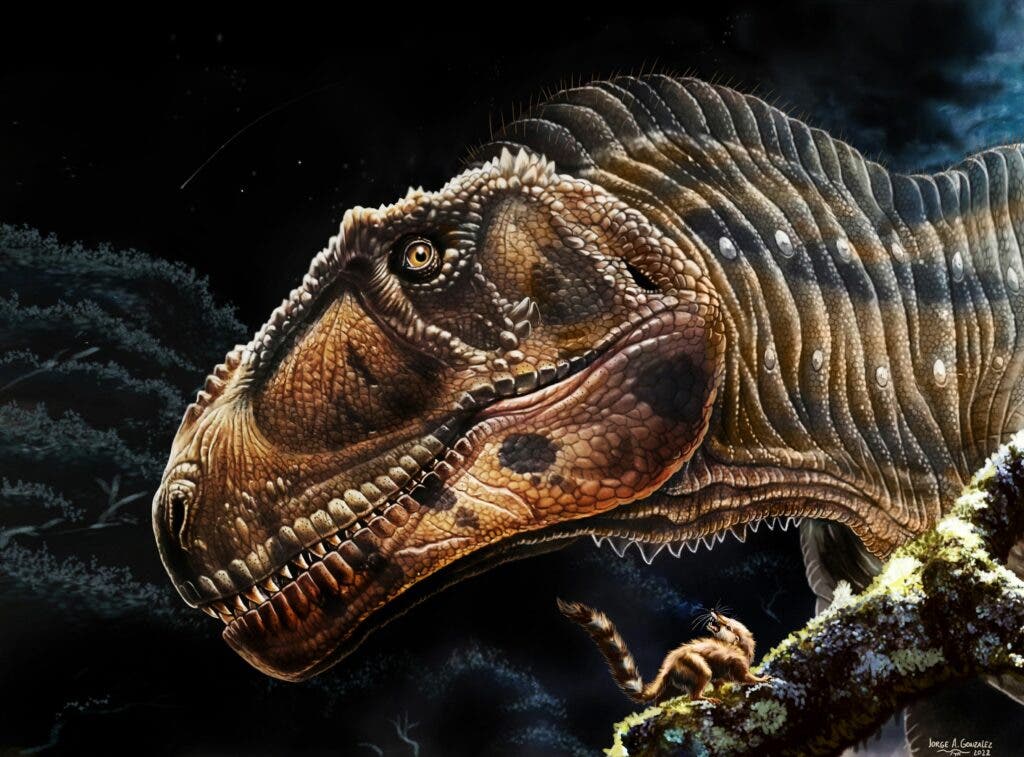Do you love big, terrifying dinosaurs with small, cutesy arms? Then one new discovery is right up your alley.

Researchers have discovered a new species of dinosaur with disproportionately short arms — just like those of the T. rex. Despite the similarity between the two, the new species christened Meraxes gigas, is not related to the infamous dinosaur. The two species evolved their tiny arms independently of one another, the team argues. Among the likely explanations for these tiny arms are potential functions such as supporting movement or easing the mating process.
Meraxes gigas belongs to the carcharodontosaurid family, discovered in modern-day Argentina, in the Winkul formation north of Patagonia. It is the most complete specimen of a carcharodontosaurid ever found in the Southern Hemisphere. The specimen is remarkably complete, including almost all the bones of its skull, cervical vertebrae, its shoulder girdle, alongside bones in the arms, pelvis, lower extremities, and several tail vertebrae.
This wealth of bones allowed the team to classify the finding as belonging to a new species.
New and short-armed
“The fossil of M. gigas shows never seen before, complete regions of the skeleton, like the arms and legs that helped us to understand some evolutionary trends and the anatomy of Carcharodontosaurids –the group that M. gigas belongs to,” says Juan Canale, project lead at Ernesto Bachmann Paleontological Museum in Neuquén, Argentina, and lead author of the paper describing the new species.
“The fossil has a lot of novel information, and it is in superb shape,” says Canale. “We found the perfect spot on the first day of searching, and M. gigas was found,” Canale says, “It was probably one of the most exciting points of my career.”
The specimen likely lived up to the age of 45 years old, measured roughly 11 meters in length, and weighed in excess of four tons.

That being said, since we can’t directly observe the species’ behavior, it’s impossible to tell for sure whether these were just ornamentation or features that served a practical purpose.
M. gigas went extinct almost 20 million years before the emergence of T. rex, the team explains. It also hails from a very different branch of the tree of life, with the authors reporting that there is “no direct relationship” between the two species.
This implies that the evolution of short arms was, for both species, a matter of practicality. Based on the structure of their bones, the team is confident that the arms did not shrink because they served no role. Rather, in some way we’re not yet sure of, the development of shorter arms gave the beasts some sort of edge.
“I’m convinced that those proportionally tiny arms had some sort of function. The skeleton shows large muscle insertions and fully developed pectoral girdles, so the arm had strong muscles,” says Canale.
In other words, although the arms were short, they were quite powerful. Exactly what purpose they were meant to serve is harder to ascertain. Judging from the fossils of M. gigas and T. rex alike, the team determined that the larger the dinosaurs’ heads were, the smaller their arms grew. Since the arms were surely not involved in hunting — a behavior that the animal’s head and jaws served — Canale believes they were used for other purposes, such as holding a female during mating or providing leverage for the bipedal dinosaurs to stand back up when they fell.
The paper “New giant carnivorous dinosaur reveals convergent evolutionary trends in theropod arm reduction” has been published in the journal Current Biology.









